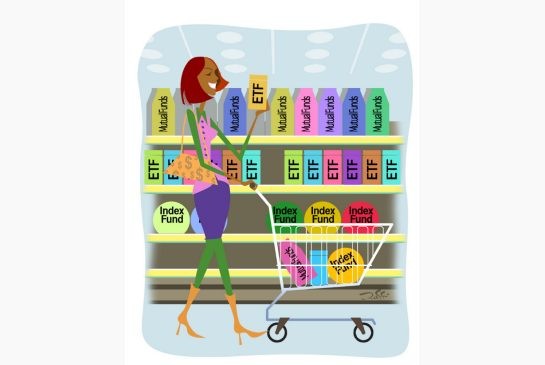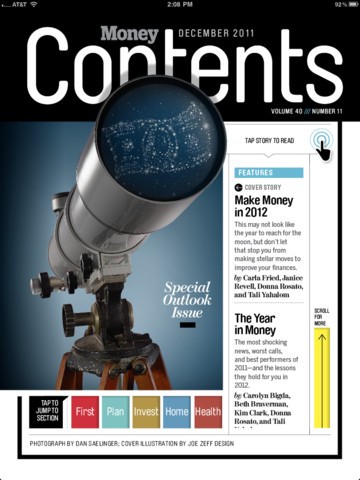All You Need to Know About ExchangeTraded Funds (ETFs)
Post on: 11 Июнь, 2015 No Comment

Posted on Aug 20, 2012
Heres another interesting post from our friends at InvestingAnswers :
What It Is:
Exchange-traded funds (ETFs) are securities that closely resemble index funds. but can be bought and sold during the day just like common stocks. These investment vehicles allow investors a convenient way to purchase a broad basket of securities in a single transaction. Essentially, ETFs offer the convenience of a stock along with the diversification of a mutual fund .
How It Works/Example:
Exchange-traded funds are some of the most popular and innovative new securities to hit the market since the introduction of the mutual fund. The first ETF was the Standard and Poors Deposit Receipt (SPDR. or Spider), which was first launched in 1993. Purchasing Spiders gave investors a way to mimic the performance of the S&P 500 without having to purchase an index fund. Furthermore, because they traded like a stock, SPDRs could be bought and sold throughout the day, purchased onmargin. or even sold short.
Whenever an investor purchases an ETF, he or she is basically investing in the performance of an underlying bundle of securities usually those representing a particular index or sector. Unit Investment Trusts (UITs) are often organized in the same manner. However, the unusual legal structure of an ETF makes the product somewhat unique.
Exchange-traded funds dont sell shares directly to investors. Instead, each ETFs sponsor issues large blocks (often of 50,000 shares or more) that are known as creation units. These units are then bought by an authorized participant typically a market maker. specialist or institutional investor which obtains shares of the underlying securities and places them in a trust. The authorized participant then splits up these creation units into ETF shares each of which represents a legal claim to a tiny fraction of the assets in the creation unit and then sells them on a secondary market.
Just as closed-end funds dont always trade at a price that precisely reflects the value of the underlying assets in each share of the portfolio, it is also possible for an ETF to trade at a premium or a discount to its actual worth. To liquidate their holdings, most investors simply sell their ETF shares to other investors on the open market. However, it is possible to amass enough ETF shares to redeem them for one creation unit and then redeem the creation unit for the underlying securities. Because of the large number of shares involved, individual investors seldom use this option.
Want More?
Why It Matters:
Exchange-traded funds have grown increasingly popular in recent years, and the number of offerings has swelled. Today, these securities compete with mutual funds and offer a number of advantages over their predecessors, including:
Low Cost
Unlike traditional mutual and index funds, ETFs have no front- or back-end loads. In addition, because they are not actively managed, most ETFs have minimal expense ratios, making them much more affordable than most other diversified investment vehicles. Most mutual funds also have minimum investment requirements, making them impractical for some smaller investors. By contrast, investors can purchase as little as one share of the ETF of their choice.

Liquidity
Whereas traditional mutual funds are only priced at the end of the day, ETFs can be bought and sold at any time throughout the trading day. Many have average daily trading volumes in the hundreds of thousands (and in some cases millions) of shares per day, making them extremely liquid.
Tax-Advantages
In a traditional mutual fund, managers are typically forced to sell off portfolio assets in order to meet redemptions. Often, this act triggers capital gains taxes, to which all shareholders are exposed. By contrast, the buying and selling of shares on the open market has no impact on an ETFstax liability. and those that choose to redeem their ETFs are paid in shares of stock rather than in cash. This minimizes an ETFs tax burden because it does not have to sell shares (and therefore potentially realize taxable capital gains) to obtain cash to return to investors. Furthermore, those who redeem their ETFs are paid with the lowest-cost-basis shares in the fund, which increases the cost basis for the remaining holdings, thereby minimizing the ETFs capital gains exposure.
Although exchange-traded funds offer several advantages over traditional mutual funds, they also have two distinct disadvantages. To begin, the securities that an ETF tracks are largely fixed, so investors that prefer active management will probably find ETFs wholly unsuitable. Furthermore, because they trade as stocks, each ETF purchase will be charged a brokerage commission. For those that make regular periodic investments such as a monthly dollar-cost averaging investment plan these recurring commissions might quickly become cost-prohibitive.
As with any security, the pros and cons should be weighed carefully, and investors should first do their homework to determine whether exchange-traded funds are the appropriate vehicle to meet their individual goals and objectives.














